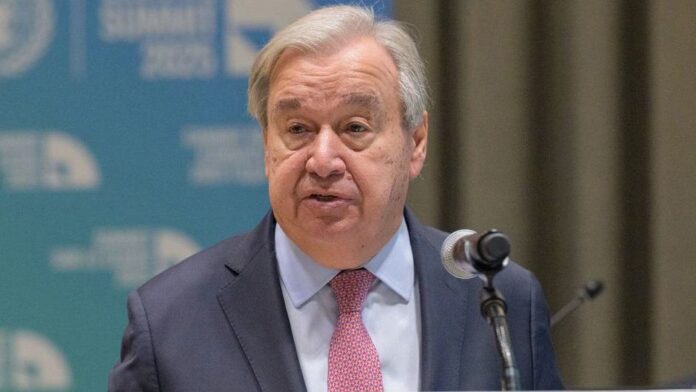The global transition to clean energy reached a historic milestone, with renewable power generation surpassing coal for the first time, according to new reports from Ember and the International Energy Agency (IEA). UN Secretary-General Antonio Guterres renewed his call for countries to accelerate their move away from fossil fuels that contribute to global warming.
Renewables Revolution Accelerates
Two new reports released on October 7, 2025 highlight how the renewable energy revolution is gaining momentum. Data from Ember, a global energy think tank, revealed that solar and wind energy have now overtaken coal in global electricity generation — marking a pivotal turning point in the world’s energy landscape.
In the first half of 2025, the growth of solar and wind energy outpaced the increase in global electricity demand, leading to a modest decline in coal and gas use compared to the same period in 2024.
“This represents a crucial turning point. Solar and wind are now growing fast enough to meet the world’s growing appetite for electricity. This marks the beginning of a shift where clean power is keeping pace with demand growth,” said Małgorzata Wiatros-Motyka, Senior Electricity Analyst, releasding the Ember report.
IEA and Ember Report Findings
According to Ember’s Global Electricity Mid-Year Insights 2025, renewable energy sources—particularly solar and wind—supplied more power than coal for the first time, signaling a structural transformation in global electricity generation. The report found that renewables met nearly 30 percent of global demand, while fossil fuels slightly declined.
The IEA’s Renewables 2025 Report projected that global renewable capacity will expand by 4,600 GW by 2030—equivalent to the combined power generation of China, the European Union, and Japan. Solar PV will drive nearly 80 percent of this growth, supported by declining costs, favorable policies, and large-scale private investment in clean energy technologies, IEA report indicated.
Solar Power Leads Global Expansion
The IEA report forecasts that global renewable power capacity will double by 2030, increasing by 4,600 gigawatts (GW) — the equivalent of adding the entire power generation capacity of China, the European Union, and Japan combined.
Solar photovoltaic (PV) technology is driving this growth, accounting for nearly 80 percent of the total capacity expansion. Wind, hydropower, bioenergy, and geothermal sources are also playing significant roles in this transformation.
Across the world, developing nations and island states are embracing solar energy. In Vanuatu, for example, communities are installing rooftop solar panels to expand access to clean and affordable power.
UN Calls for Urgent Global Action
In response to the findings, Antonio Guterres emphasized that the clean energy revolution is no longer a distant vision. “The clean energy future is no longer a distant promise – it’s here,” he said on social media, urging global leaders to “seize this historic opportunity and supercharge the global shift towards a better future for all.”
The reports reinforce the messages shared during the UN Climate Summit held last month and the Moment of Opportunity report published in July. Both stress the importance of scaling up climate action ahead of COP30 in Brazil this November.
Transition Not Fast or Fair Enough
Despite encouraging progress, the UN chief cautioned that the global energy transition remains too slow and unequal. He warned that without stronger international cooperation and investment, the world risks missing the Paris Agreement goal of limiting global temperature rise to 1.5°C above pre-industrial levels.
As renewables gain momentum, experts say that sustained policy support, investment in clean technologies, and equitable financing for developing nations will be key to achieving a truly just energy transition.
Baburajan Kizhakedath

